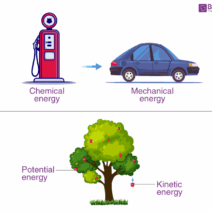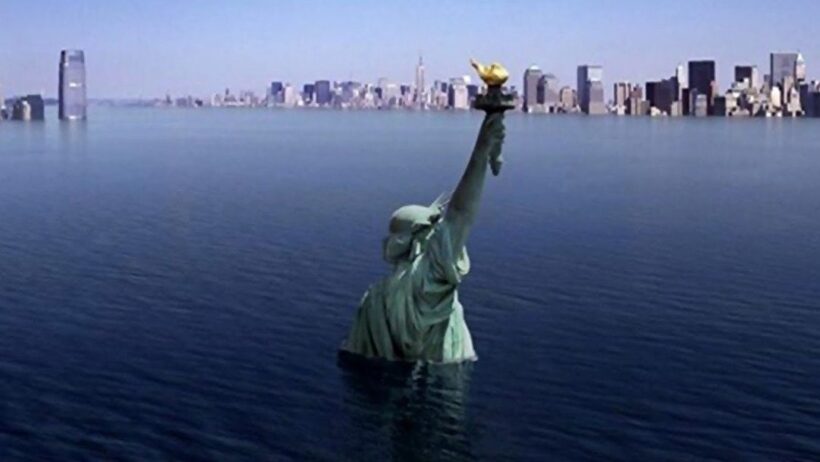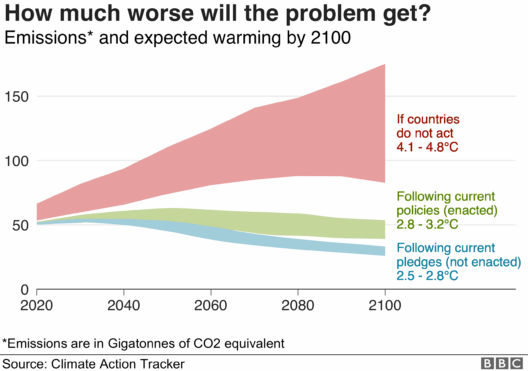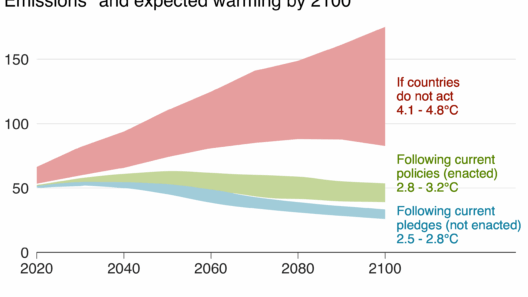As humanity stands at the brink of an unprecedented ecological crisis, the specter of rising sea levels looms ever larger on the horizon, a crescendo in the symphony of climate change. The delicate balance of our coastal ecosystems hangs in the balance as glaciers and ice sheets, the sentinels of the polar realms, succumb to warming temperatures. Each melting iceberg is akin to an ancient tome relinquishing its secrets, revealing stories of a planet in distress while drawing back the curtains on future threats.
The inexorable rise of sea levels is not a distant concern; it is an immediate reality. As the Earth’s temperature continues to increase, thermal expansion of ocean waters, coupled with the relentless melting of polar ice, propels the ocean’s surface ever higher. These phenomena act in concert, painting a vivid picture of a world that transforms with alarming speed. Globally, average sea levels have risen approximately 8 to 9 inches since 1880, and the pace is accelerating, projected to rise an additional 1 to 4 feet by the close of this century. Such an increase translates directly into a devastating potential for coastal erosion, land loss, and transformative impacts on human and wildlife populations.
The metaphor of “rising tides” can be viewed as a dual-edged sword, illustrating not only the physical elevation of ocean waters but also the surge of fears enveloping burgeoning coastal communities. With densely populated urban areas such as Miami, New York City, and New Orleans perched precariously on the brink, the realization is both haunting and urgent: entire neighborhoods may soon find themselves submerged beneath the ever-encroaching surf. Evoking imagery from mythology, coastal cities stand as modern-day Atlantis, facing a reality where their legendary existence hangs by a thread.
Coastal ecosystems, too, are feeling the brunt of this climatic upheaval. Estuaries, wetlands, and mangroves—the linchpins of biodiversity and natural buffers against storm surges—are increasingly threatened. These habitats act as nurseries for countless marine species and provide sanctuary for diverse flora and fauna; however, as saltwater infiltrates and freshwater resources dwindle, the equilibrium necessary for survival begins to dismantle. The saltwater intrusion not only affects terrestrial vegetation but also jeopardizes agricultural productivity, threatening food security for millions.
As water engulfs land, the implications extend beyond ecological concerns, reaching into the realm of socio-economic stability. Communities that have thrived along coastlines for generations face possible displacement, leading to cultural disintegration. The migration of populations away from inundated areas, often referred to as “climate refugees,” poses significant humanitarian challenges as nations grapple with the intricate web of environmental, social, and political ramifications. The displacement of communities disrupts not only local economies but can also ignite tension and conflict over dwindling resources.
Moreover, the insurance market finds itself in choppy waters as rising sea levels exacerbate risks associated with extreme weather events. The increasing frequency and intensity of hurricanes, typhoons, and heavy flooding weigh heavily on the economic stability of coastal insurance markets. Premium costs can skyrocket, investments falter, and ultimately, entire regions may become uninsurable—a scenario reminiscent of a once-vibrant theater shuttering its doors, leaving behind memories of what was no longer viable.
The metaphors merge further with the sense of urgency encapsulated in this ecological crisis. Rising tides encapsulate not merely an environmental challenge but a clarion call for collective action. The interplay between human activity and climate change is overt; our decisions today have profound implications for the world that tomorrow’s generations will inhabit. Each action, each policy initiative, and each moment of awareness serves as a bulwark against the tide of apathy and denial. We must choose to fortify our resolve, whether through enhanced renewable energy adoption, intelligent urban planning, or robust conservation measures aimed at preserving vital coastal habitats.
Let us not be lulled into complacency by the short-lived moments of relief that may suggest otherwise. The impacts of climate change are not equally distributed—those least responsible often bear the heaviest burdens. The ethical imperative to rectify such inequalities underscores the moral dimension of rising sea levels. Global cooperation and long-term visionary strategies must emerge as beacons guiding us toward sustainable solutions that address both climate resilience and social justice.
In conclusion, as the tides rise, so too must our collective engagement with the realities of global warming and sea level change. The impending challenges force us to confront our fears while galvanizing our efforts towards action, ingenuity, and adaptation. The dialogue surrounding climate change is not merely a dispassionate exchange of information but rather a communal rallying cry; it is a narrative woven from threads of accountability, empathy, and resilience. We are called upon to reshape the story, to ensure our coastal cities remain not as sunken relics of a bygone era, but as thriving habitats resilient against the tides of change. The stakes have never been higher, and the time to act is now.







